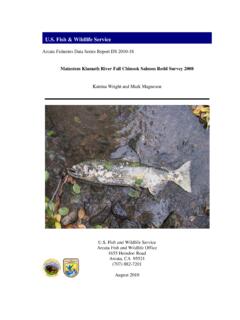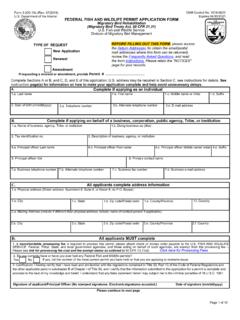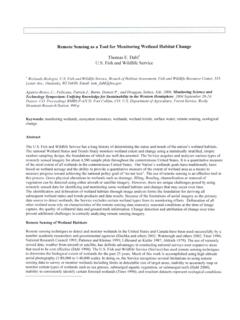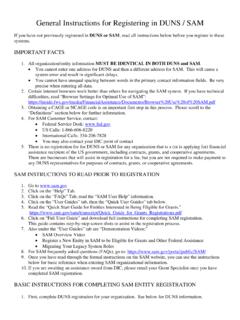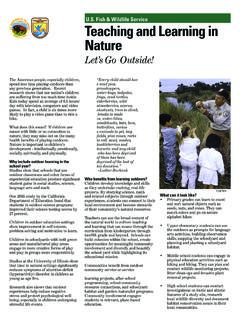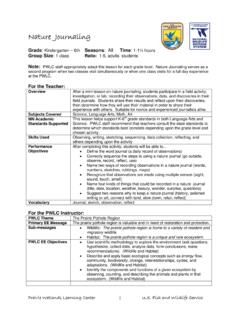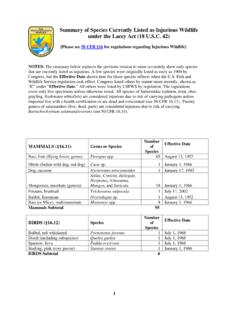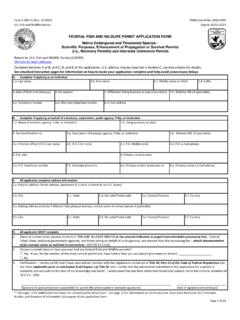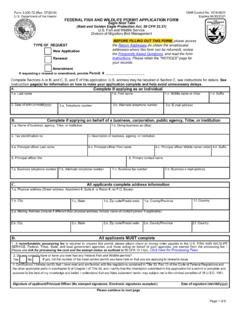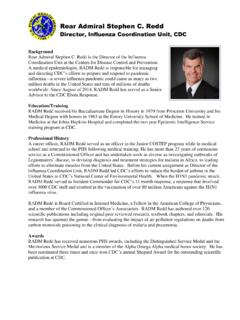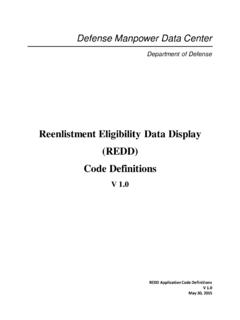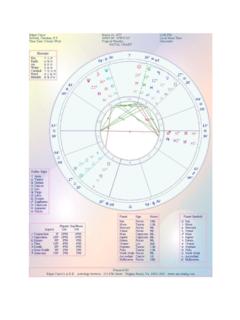Transcription of 2016 Bull Trout Redd Monitoring in the Wallowa …
1 2016 bull Trout redd Monitoring in the Wallowa Mountains Prepared by: Gretchen Sausen Fish and Wildlife Service La Grande Field Office April 2017 2016 bull Trout redd Monitoring in the Wallowa Mountains Report 2 2016 bull Trout redd Monitoring in the Wallowa Mountains Prepared by: Gretchen Sausen Fish and Wildlife Service La Grande Field Office April 2017 ABSTRACT bull Trout were listed as threatened under the Endangered Species Act in 1998 due to declining populations. The U. S. Fish and Wildlife Service (Service) recommends Monitoring populations in subbasins where little is known, including the Grande Ronde and Imnaha subbasins. Spawning survey data is important for determining relative abundance and distribution trends in bull Trout populations. This report summarizes the 2016 bull Trout spawning data collected in the Wallowa Mountains of NE Oregon and compares this with past years data. bull Trout spawning surveys have been conducted on similar index areas for selected Grande Ronde and Imnaha River streams from 1999 to 2016 .
2 These surveyed streams are located within the Wallowa River/Minam River and Imnaha River bull Trout core areas. Surveys in 2016 were conducted by the Nez Perce Tribe (NPT), the Oregon Department of Fish and Wildlife (ODFW), the Service, Forest Service (USFS), Freshwater Trust, Grande Ronde Model Watershed (GRMW), a fisheries consultant, and Anderson Perry, Inc. Objectives of the survey included; locate bull Trout spawning areas, determine redd characteristics, determine bull Trout timing of spawning, collect spawning density data, determine and compare the spatial distribution of redds along the Lostine River in 2006 through 2016 , and over time use all of the data to assess local bull Trout population trends and the long-term recovery of bull Trout . Timing of spawning, total redds, redd sizes, and redd locations are documented in the report. The local bull Trout populations were relatively stable for the survey period (1999- 2016 ) and there was a decrease in redd numbers on the Imnaha River in 2016 compared to 2015, and an increase in redd numbers on the Lostine River, Bear/Goat Creek, Big Sheep Creek in 2016 , compared to 2015.
3 The increases were not significant, the redd numbers were still low compared to 2014 and previous years. The Imnaha population is one of the strongholds within the Imnaha Subbasin. Big Sheep Creek and Little Sheep Creek populations within the Imnaha River core area are of concern for long-term viability due to issues with stream flows, fish passage, and connectivity. The Lostine River and Bear Creek contain brook Trout and hybridization is likely occurring (the Lostine has had documented bull Trout and brook Trout pairing up for spawning). 2016 bull Trout redd Monitoring in the Wallowa Mountains Report 3 ACKNOWLEDGMENTS The Service has, for the past thirteen years, provided staff time necessary for the coordination, implementation, and analysis and report summarization of this project. This project would not have been possible without the dedication, hard work, funding, and assistance provided by all the partners. Oregon Watershed Enhancement Board (OWEB) funding from 2007- 2016 allowed the use of Del Sol Wilderness Adventures (2008- 2016 ) for a horse/mule packer to pack our gear in and out of the Upper Imnaha to conduct our annual spawning survey in that drainage.
4 I would like to thank the partners in 2016 which included; the NPT, ODFW, the USFS, OWEB, GRMW, the Service, Freshwater Trust, Anderson Perry, Inc., and a fisheries consultant. Special thanks to the people who walked the streams, helped with scheduling surveys and surveyors, provided access to private property, packed us into remote areas to survey, assisted with the OWEB grants, produced maps with the GIS data, or summarized the data. These included: Gary Miller and Justin Martens (Service); Alan Miller, Sarah Brandy and Richard Castillo (USFS), Barry and Shirley Cox, Paul Arentsen, and crew (Del Sol Wilderness Adventures Horse/Mule Packers and Winding Waters River Expeditions); Jeff Oveson, Mary Estes, Jessica Phelps, and Alex Borgerding (Grande Ronde Model Watershed); Matt King (consultant); Shane Vatland, Gus Johnson, Brian Simmons, Devin Olsen, Ryan Rumelhart, Lynne Price, Mary Edwards, and Jim Harbeck (NPT); Jeff Yanke, Kyle Bratcher (ODFW); Aaron Maxwell (Freshwater Trust); and private property landowners on the Lostine River.
5 INTRODUCTION bull Trout were listed as threatened under the Endangered Species Act in 1998 due to declining populations. The Service recommends Monitoring populations in subbasins where little is known including the Grande Ronde and Imnaha subbasins (USFWS 2002). The final bull Trout recovery plan states that Monitoring may include assessing distribution, population status, life history, migratory movements, and genetic characteristics of bull Trout in each recovery unit (USFWS 2015). The USFWS Mid-Columbia bull Trout Recovery Unit Implementation Plan recommends continuing to monitor bull Trout in the Imnaha Core Area, providing information on distribution and abundance for recovery. It also recommends development of a long term Monitoring program to assess distribution, status and trend of bull Trout in the Wallowa /Minam Core Area (USFWS 2015). Refer to Figure 1 (below) for location of these bull Trout core areas within the larger Mid-Columbia bull Trout Recovery Unit. 2016 bull Trout redd Monitoring in the Wallowa Mountains Report 4 Figure 1.
6 Map of Wallowa /Minam and Imnaha River Core Areas within the Mid-Columbia bull Trout Recovery Unit Without adequate funding, it has been difficult to find sufficient numbers of experienced bull Trout surveyors and packers for surveys in the back-country, and to obtain adequate supplies to get the work accomplished. OWEB funding for the project supported the continued survey of bull Trout spawning areas in years 2007 through 2016 in the Wallowa Mountains of northeast Oregon. bull Trout redd counts (spawning surveys) have been conducted annually on the Wallowa Valley, Hells Canyon National Recreation Areas (HCNRA), and Eagle Cap districts of the USFS and along some sections of private property of the Lostine River by the Service, NPT, ODFW, USFS, consultants, volunteers and others for the past 16 to 18 years. Objectives of the bull Trout spawning surveys include: Locate bull Trout spawning areas. Determine redd (spawning nest) characteristics. Determine bull Trout timing of spawning.
7 Collect spawning density data. Map the location of the bull Trout spawning reaches. Determine and compare the spatial distribution of redds along the Lostine River in 2005 through 2016 . Collect UTM spatial redd data on Big Sheep, Lick Creek, and Middle Imnaha to compare at a later date. Assess population trends for local bull Trout populations. Use this information for helping assess the long-term recovery of bull Trout . 2016 bull Trout redd Monitoring in the Wallowa Mountains Report 5 LOCATION The Service and multiple partners conducted bull Trout spawning surveys in 2016 on selected streams in the Grande Ronde and Imnaha Sub-Basins. These streams are located within the Wallowa River/Minam River and Imnaha River bull Trout core areas. Stream systems surveyed in 2016 for bull Trout redds included; the Lostine River, Bear and Goat Creeks, the Imnaha River, Big Sheep Creek and Lick Creek (Figure 2). In 2014 and 2015, exploratory surveys were conducted on tributary streams to the Wallowa River upstream of Wallowa Lake, the West Fork and East Fork Wallowa Rivers commencing at Wallowa Lake and surveying to the upstream waterfall on the West Fork Wallowa River and surveying the East Fork Wallowa River from the confluence with the West Fork Wallowa River upstream to the first waterfall.
8 The Service was not granted access to private property along the East Fork Wallowa River in 2016 ; therefore, this survey was not conducted. In 2016 , Deer Creek was surveyed from Road 8270 upstream miles. Figure 2. Wallowa mountain bull Trout redd Survey Areas. 2016 bull Trout redd Monitoring in the Wallowa Mountains Report 6 Downstream view of Imnaha River at the Blue Hole, 2016 View of the Lostine River and surrounding mountains, 2016 2016 bull Trout redd Monitoring in the Wallowa Mountains Report 7 Sue Brady, Anderson Perry, Inc. measuring a bull Trout redd on the Lostine River, 2014. METHODS bull Trout spawning surveys on large rivers require as many as ten to twelve people in one day, to complete the surveys during the spawning period. Surveyors walk the rivers through the selected index areas to locate bull Trout redds. Index areas in this report refer to known bull Trout spawning reaches that have been surveyed in the same consistent locations on an annual basis.
9 This project is part of a larger effort in NE Oregon and SE Washington that occurs during September through October, the bull Trout spawning period. Due to the lack of available experienced surveyors to conduct these surveys, we have had to increase our survey days on the accessible sections of the Lostine and Imnaha Rivers to two days, conducting half of the survey length one day and the other half the following day. Surveys were conducted twice (mid and late bull Trout spawning season) on the Lostine River, Big Sheep Creek, Lick Creek, Middle Imnaha (Blue Hole to Indian Crossing), and Bear and Goat Creeks. One-time surveys were conducted late in the spawning season in 2016 (as in past years), on the Upper Imnaha River and tributaries, due to access and funding limitations. An exploratory survey was conducted on Deer Creek for approximately stream miles. Appendix B, Table 1 compares survey data and survey frequency for 1999- 2016 bull Trout spawning surveys on selected Grande Ronde and Imnaha River streams.
10 Stream miles surveyed (not including repeat surveys) for the above streams totaled in 2007, in 2008, in 2009, in 2010, in 2011, in 2012, in 2013, in 2014, and in 2015 and 2016 . In 2013, there were less stream miles surveyed 2016 bull Trout redd Monitoring in the Wallowa Mountains Report 8 in the Upper Imnaha due to lack of personnel and weather conditions. Total redd numbers are all redds documented, and not necessarily comparable river miles (refer to Appendix B, Table 2a-2d for comparable reaches and redd counts for those sections). The survey protocol (in addition to repeat surveys, or one-time late surveys where feasible) included; 1) visits to known bull Trout redds and review of survey form prior to redd count survey, 2) experienced bull Trout redd count surveyor(s) paired with inexperienced surveyor (on the job training), 3) bull Trout redds measured, data recorded, and redds flagged during survey, and 4) all stream flagging removed post-surveys.
